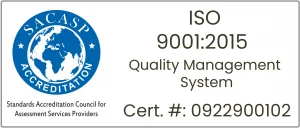Revolutionising Remittance: How NetRemit’s Promotion Management Drives Loyalty and Growth
NetRemit empowers remittance businesses to boost growth and build lasting customer loyalty through seamless promotion management. Know how!
How Smaller Money Transfer Operators Can Thrive in International Remittance Landscape
Explore smart strategies and tech-driven solutions for small MTOs to establish leadership and dominate the competitive international remittance market.
Powering the Gig Economy with Instant Cross-Border Payments
See why instant cross-border payments are essential for the gig economy, eliminating delays, high fees, and inefficiencies while boosting global workforce efficiency.
Intelligent Payment Routing (IPR) – An Essential for P2P and B2B Remittance Businesses
Maximize efficiency in P2P and B2B remittance with Intelligent Payment Routing that ensures optimal transaction routing and settlement. Know how!
Alternative payment methods: What Cross Border Payments Businesses Need to Know
Here’s what you need to know about alternative payment methods for remittances to keep up with customer demands, i.e., frictionless and more affordable than traditional methods.
The Role of SEPA Instant Payments in the Future of Banks & B2B Payments
Get an in-depth understanding of how SEPA Instant Payments will transform bank and B2B transactions, paving the way for a more efficient, interconnected financial ecosystem.
Why Value-Added Payment Services are Crucial for the Remittance Business
Traverse the article
The torchbearers of innovation and pioneers of technology in cross-border payments achieved significant milestones over the past decades to erase borders and widen businesses to flourish like never before. According to the market estimates made in the year 2023, by Statista, the value of transactions is likely to grow by 289% between 2023 and 2030, operating through real-time payment or instant payment.
The advent of fintech has helped several Payment Service Providers to expand their services, which made remittance available to the remotest of places across the globe. However, now the biggest challenge that lies is to tackle the growing demands.
Value Added Payments offer a mammoth value in both catering to the growing demands of consumers and helping businesses stay on trend, unlocking newer opportunities. This blog will elucidate the nuances of Value-Added Payment Services, the diverse prospects it will unleash, and how businesses can leverage these services to drive growth and enhance customer experience.
Key Use Cases of Value-Added Payment Services in CBP
The integration of value-added payment services is accelerating the adoption of real-time payments, driving innovation, and creating new opportunities for users globally. This underscores the critical role of these services in advancing global payment solutions. Proxy-based payment systems like India’s UPI, Singapore’s PayNow, and Thailand’s payment initiation services leverage real-time rails to simplify transactions. Similarly, Brazil’s Pix, built on SPI infrastructure and managed by the Central Bank, showcases how proxy identifiers and public payment systems drive efficiency and inclusivity.
Let us analyse some predominant use cases:
Utility and Household Bills
Cross-border payment platforms seamlessly integrate with utility service providers in recipient markets, enabling efficient bill payment processes. Through API-driven connections and robust payment gateways, users can log in, select a provider, input account credentials, and execute payments in the local currency. These platforms ensure real-time transaction processing, instant payment confirmation, and the generation of detailed receipts for audit and tracking purposes.
Advantages:
- Guarantees uninterrupted utility services by enabling timely payments for electricity, water, internet, and more.
- Streamlines operational workflows by reducing dependency on intermediaries for local payments.
- Enhances transparency with robust reporting capabilities and instant confirmations, fostering trust and user satisfaction.
These regulations apply to all banks operating within the Single Euro Payments Area (SEPA), Payment Service Providers (PSPs), and Electronic Money Institutions (EMI) that focus on credit transfers.
Mobile Top-Ups
Operated through strategic partnerships between cross-border payment platforms and mobile network operators in recipient countries, users can log into the platform, select the recipient’s mobile operator, enter the phone number, and specify the recharge amount. Transactions are processed instantly, crediting the recipient’s account in real time, ensuring a seamless and efficient experience for both the sender and recipient.
Advantages:
- Guarantees uninterrupted communication, especially during critical emergencies.
- Promote financial inclusion by enabling mobile wallet recharges for the unbanked population.
- Provides a convenient channel for small-value remittances, enhancing customer satisfaction and engagement.
School/College Tuition
Facilitated through the integration of remittance platforms with the payment systems of educational institutions, users can select the institution, input student identification details, and make payments directly in the local currency. These platforms ensure secure transactions, compliance with regulatory standards, and real-time payment notifications to both senders and recipients, offering seamless experience for managing education-related financial needs.
Advantages:
- Ensures transparency by directly transferring funds to the institution, avoiding intermediaries.
- Eliminates delays or errors in managing critical education payments.
- Simplifies administrative efforts for families managing overseas education costs, enhancing their overall experience.
E-Commerce Purchases
By integrating cross-border payment systems with global e-commerce platforms, payments are processed effortlessly across borders. These platforms offer robust multi-currency capabilities, secure payment processing, and competitive foreign exchange rates. By allowing users to complete transactions directly at the checkout without requiring third-party currency conversion, they ensure a frictionless and efficient shopping experience.
Advantages:
- Facilitates a seamless global shopping experience by removing payment barriers.
- Eliminates hidden fees and reduces the impact of unfavourable exchange rates, increasing transparency.
- Expands access to a vast range of international products and services, enhancing customer engagement and loyalty.
Subscriptions
Facilitated through recurring payment integrations with global service providers such as streaming platforms, online learning courses, and software tools, users can link their accounts to the cross-border remittance platform. This allows automated payments in the local currency, ensuring uninterrupted access to services and streamlining the payment process.
Advantages:
- Prevents service disruptions by automating recurring payments.
- Reduces the manual effort required to manage multiple subscriptions.
- Minimises currency conversion fees for global services, offering a cost-effective solution.
Travel and Tourism
Cross-border payments in the travel and tourism sector are facilitated through partnerships with airlines, hotels, and travel agencies. Users can book services, pay in their local currency, and receive instant confirmation through the platform. Additionally, bundled offerings such as travel insurance can be integrated, ensuring a complete travel solution.
Advantages:
- Simplifies international travel payments by offering dynamic foreign exchange rates.
- Provides transparency and peace of mind with instant booking confirmations.
- Enables the inclusion of bundled services, like travel insurance and vacation packages, enhancing the customer experience.
Charity
Donors can choose causes, enter donation details, and transfer funds directly via remittance platforms integrated with international non-profits or NGOs, ensuring secure contributions with real-time monitoring.
Advantages:
- Facilitates quick and secure donations, especially during disasters or emergencies, providing immediate relief.
- Enhance transparency and accountability, giving contributors confidence in their charitable efforts.
- Encourages philanthropy by reducing the complexity of cross-border donations, making giving easier and more accessible.
Investment
Investment payments are supported through integrations with global brokers, mutual fund providers, and real estate agencies. Users select their desired investment category, transfer funds securely, and receive immediate payment confirmation.
Advantages:
- Simplifies access to global investment opportunities, expanding choices for investors.
- Provides secure and cost-effective payment channels, ensuring safe transactions.
- Enhances returns by offering competitive exchange rates, improving overall investment outcomes.
Customer-Centric Benefits of Implementing Value-Added Payment Services
Value-added payment services in cross-border payments provide numerous benefits, prioritising customer convenience, affordability, and accessibility.
Below is a breakdown of these benefits with detailed explanations and their impact.
Convenience for Recipients
Cross-border payment platforms streamline the process for recipients by offering direct payments to service providers like utility companies, educational institutions, and mobile operators. Recipients no longer need to handle cash or visit service centres, ensuring a hassle-free experience.
- Direct payments for bills, tuition fees, and subscriptions.
- Instant mobile top-ups and wallet recharges.
- Real-time payment tracking and confirmations.
Cost-Effectiveness Compared to Traditional Methods
Traditional cross-border payment methods often involve high fees, delays, and currency exchange losses. Modern platforms reduce these costs by offering competitive FX rates, lower transaction fees, and automated payment options.
- Significantly lower transfer fees compared to banks or money transfer agents.
- Competitive exchange rates with no hidden charges.
- Automation of recurring payments saves time and money.
Financial Inclusion
Value-added payment solutions extend financial services to unbanked and underbanked populations. Mobile wallets and digital payment integrations ensure everyone can participate in the financial ecosystem, even in remote regions.
- Enables access to digital payments for unbanked individuals.
- Promotes financial literacy and empowerment.
- Expands access to global markets and opportunities.
Middleman Cost Elimination
By integrating directly with service providers, cross-border platforms eliminate intermediaries, ensuring funds reach their intended destination quickly and securely. This reduces unnecessary delays and additional fees.
- Removes intermediaries in payments for services like utilities and education.
- Guarantees transparency and secure transactions.
- Reduces administrative burdens for recipients.
Unlocking Business Value through Value-Added Payment Services
The implementation of value-added payment services in cross-border payment solutions not only benefits customers but also provides significant advantages to businesses. These solutions enable service providers to grow their revenue, expand their market presence, and enhance customer retention.
Let us introspect the business benefits in detail:
Customer Loyalty
By offering a seamless and customer-centric payment experience, businesses can foster stronger relationships with their users. Value-added payment services like bill payments, mobile top-ups, and subscriptions ensure recurring interactions, building trust and long-term loyalty.
- Enhances customer satisfaction through convenience and reliability.
- Increase repeat usage by addressing everyday financial needs.
- Builds a strong reputation as a customer-first service provider.
New Revenue Streams Through Partnerships
Collaborating with service providers across various sectors opens opportunities for businesses to tap into new revenue sources. Through transaction fees, commissions, or profit-sharing arrangements, businesses can enhance their service offerings and drive additional income.
- Earns commissions from integrated partner services.
- Creates monetisation opportunities through premium features.
- Strengthens market presence with a broader range of offerings.
Positioning as a One-Stop Solution for Financial and Payment Needs
Providing diverse payment options positions businesses as comprehensive platforms for financial services. Customers are more likely to choose providers who meet all their payment needs in one place, ensuring convenience and consistency.
- Increase customer retention by offering diverse solutions.
- Reduces customer churn as users prefer all-in-one platforms.
- Strengthens brand identity as a market leader in cross-border payments.
Broader Market Reach
Integrating value-added payment services enables businesses to serve wider customer segments, including expatriates, students, and freelancers. With tailored services for diverse demographics, businesses can expand into new geographical and user markets.
- Attracts diverse customer bases with customised offerings.
- Expands global reach by addressing region-specific needs.
- Increase competitiveness in the cross-border payment industry.
Cross-Selling Opportunities
Value-added payment solutions create opportunities to cross-sell complementary services like investment options, insurance, and travel packages. These add-ons not only increase revenue per customer but also enhance the overall customer experience.
- Drives additional revenue through bundled service offerings.
- Enhances the value proposition with integrated financial products.
- Build stronger customer relationships by addressing broader financial needs.
Technical Challenges in Implementing Value-Added Payment Services in Cross-Border Payments
Despite significant technological advancements, the demand for swift, transparent, and cost-effective cross-border payments remains unmet. The complexity of navigating diverse regulatory frameworks across jurisdictions often results in inefficiencies, delays, and increased costs. Several new projects like Nexus, mBridge, and Dynamo demonstrate that while technology can drive innovation, regulatory clarity, and interoperability are essential for overcoming the technical challenges that hinder seamless global transactions and value-added payment services.
Let us analyse them in detail:
- System Integration with Multiple Stakeholders: Integrating value-added payment solutions with a diverse array of stakeholders such as service providers, financial institutions, and telecom operators is complex. Ensuring seamless interoperability across varying systems, technologies, and data formats is critical to achieving smooth operations. This complexity can extend development timelines and increase implementation costs.
- Scalability for High Transaction Volumes: Cross-border payment systems must be designed to handle significant transaction spikes, particularly during peak periods like holidays or special events. Building scalable infrastructure that supports high transaction volumes without downtime is essential. Failure to do so may result in delays, service disruptions, and customer dissatisfaction.
- Regulatory Compliance: Cross-border payment platforms must comply with an evolving landscape of regulations such as AML, KYC, and data privacy laws across different regions. Ensuring that systems are continuously updated to meet changing legal requirements is crucial. Failure to comply can lead to heavy penalties, operational disruptions, and reputational damage.
- Security and Fraud Management: The increasing volume of value-added payment services heightens the risk of fraud, data breaches, and cyber-attacks. Payment systems must implement robust security measures, including encryption and fraud detection tools, to protect sensitive user information and prevent unauthorised transactions. Any security breach could damage the brand’s reputation and result in regulatory penalties.
- Real-Time Payment Processing: For value-added payment services such as mobile top-ups and bill payments, real-time processing is a necessity to ensure customers receive immediate benefits. Developing infrastructure that supports instant payment processing with high accuracy is essential to maintaining user satisfaction. Delays or errors in processing can erode trust and customer loyalty.
- Maintaining Interoperability Across Payment Channels: Value-added payment services often require integration with multiple payment channels, including bank transfers, wallets, cards, and cash pickups. Ensuring seamless interoperability across these channels is necessary to provide unified and smooth customer experience. Differences in processing times, formats, and settlement methods can lead to inconsistencies in payment delivery.
- Customisation and Localisation: Local payment preferences and regulatory requirements vary significantly across regions, requiring systems to be customised to meet these diverse needs. Developing modular, flexible solutions that can be tailored for each market is key to expanding service reach while ensuring compliance with regional regulations.
- Dependence on Reliable Infrastructure: Cross-border payments require a stable internet connection and reliable power supply, which may not be available in remote or developing regions. Ensuring uninterrupted service delivery in such areas demands careful planning and investment in infrastructure, or it could result in disruptions to services and affect customer experience.
Best Practices for Businesses Offering Value-Added Payment Services
Implementing value-added payment services requires a holistic approach that combines strategic planning, robust technology, and a customer-centric focus. A reliable platform will deliver seamless, end-to-end solutions by leveraging the right set of services and technology. Your partners must align with your business goals to maximise the benefits.
Key Aspects to Consider:
- Understand Customer Needs and Regional Preferences: Different markets have unique payment requirements. Through market research, businesses can identify key pain points and tailor services to meet regional regulations.
- Partner with Trusted Service Providers: Collaborating with reliable partners, like utilities and e-commerce platforms, is critical to offering diverse value-added payment services (VAPs). Use APIs to integrate secure, real-time payments and nurture long-term relationships. NetRemit’s advanced API architecture facilitates smooth, scalable partnerships.
- Invest in Scalable and Secure Technology: A secure, scalable infrastructure is vital for handling high transaction volumes while building customer trust. Cloud-based platforms, encryption, fraud detection, and built-in compliance features ensure smooth and secure operations.
- Prioritize User Experience: Simplifying payment processes enhances customer loyalty. Offering intuitive, multi-lingual interfaces, real-time tracking, and mobile-first designs ensures a seamless experience.
- Utilise Advanced Analytics for Informed Decision-Making: Data-driven insights optimise services and operational efficiency. By monitoring customer behaviour, refining offerings with predictive analytics, and using actionable reports, businesses can support market growth. NetRemit’s integration with Power BI and SSIS provides 40+ advanced reports for informed decision-making.
- Focus on Financial Inclusion and Accessibility: To bridge the gap for unbanked populations, businesses should offer mobile wallets, low-cost options, and offline solutions. NetRemit integrates mobile wallet solutions, enabling businesses to expand services to underserved markets, and driving financial inclusion.
- Ensure Seamless Compliance: Adhering to global and regional regulations is essential to maintain trust and avoid penalties. Regular system updates and real-time monitoring ensure compliance.
Businesses gain flexibility by accessing leading fintech solutions through seamless integration, optimising cross-border payment processes. From AML/KYC checks to FX, payment gateways, CRM, SMS, and more, the plug-and-play architecture ensures that all requirements are met with minimal friction.
NetRemit enhances this further by offering a unified, robust platform that simplifies complex tasks such as integration, product upgrades, billing, and compliance management. By consolidating these functions, it reduces operational overhead, allowing businesses to focus on scaling.
Thus, businesses leverage a secure, scalable infrastructure that enhances transaction speed, reduces integration time, and ensures compliance. They can also streamline operations, optimise performance, and support the future of cross-border payments with greater efficiency. NetRemit’s third-party integrations and support enable businesses to partner with the best service providers, continuing to deliver value-added payment services while enhancing overall capabilities.
Wrapping Up
With the right strategies and the perfect partner, international remittance transforms from a challenge into a powerful opportunity. Reaping the advantages of value-added payment services, service providers are making a mammoth shift, creating new revenue streams, enhancing customer experiences, and expanding their market reach. By embracing these innovative solutions, they not only stay ahead of industry trends but also build long-term customer loyalty and trust.
NetRemit from MacroGlobal seamlessly integrates these services while navigating the complexities of global operations. By adopting value-added payment services, businesses position themselves as one-stop solutions, opening doors to expanded market reach and driving sustainable growth in the cross-border payments ecosystem.
Smart integrations that increase your revenue stream beyond remittance
Maximise your collection of financial services and gain value from our market-leading remittance software that can be fully customised to match your brand’s needs.
Smart integrations that increase your revenue stream beyond remittance
Maximise your collection of financial services and gain value from our market-leading remittance software that can be fully customised to match your brand’s needs.
Ready to get started?
We can’t wait to show you what’s possible with NetRemit.
Decoding the EU’s Instant Payments Regulation
It is imperative that banks and financial institutions navigate the challenges of the EU’s Instant Payments Regulation (IPR) while also taking advantage of its opportunities. Explore how!
Role of SWIFT gpi in enhancing cross border payments
The SWIFT GPI ensures speed, transparency, and traceability of cross-border payments, transforming global transactions for businesses. Here’s how!
Slashing Transaction and Intermediary Fees in Cross-Border Payments
Here are actionable ways to save on remittance expenses, empowering your business to maximize profits and streamline cross-border payments. Read on!

















